49 Nights | Europe
About Samos, Greece
You will visit the following 25 places:

Gibraltar
Gibraltar is a British Overseas Territory on the south coast of Spain known for the Rock of Gibraltar (a major landmark of the region), a 426m limestone ridge at its centre. It is a very unique place for the curious traveller. You can take the time to explore the caves and tunnels. The inside of the rock is an absolute labyrinth with secret internal roads and tunnels four times longer than those on the surface. Military presence and security in this otherwise deserted area is strong but almost invisible. Also, at the Apes' Den (Queen's Gate) and in the area of the Great Siege Tunnels there is the rare opportunity to see semi-wild primates at close quarters. If you let them, the monkeys will be their captivating selves and behave in their everyday natural manner.

Palma
Palma is a resort city, the capital and largest city of the autonomous community of the Balearic Islands in Spain. It is situated on the south coast of Majorca on the Bay of Palma. As of the 2009 census, the population of the city of Palma proper was 401,270, and the population of the entire urban area was 621,000, making it the twelfth largest urban area of Spain. Almost half of the total population of Majorca live in Palma. The Cabrera Archipelago, though widely separated from Palma proper, is administratively considered part of the municipality. Its airport, Son Sant Joan, serves over 22 million passengers each year.

Dubrovnik
Dubrovnik is a gorgeous Croatian city on the Adriatic Sea coast positioned at the terminal end of the Isthmus of Dubrovnik. It is one of the most prominent tourist resorts of the Mediterranean and listed as a UNESCO World Heritage Site since 1979. The city is nicknamed "Pearl of the Adriatic". The success of Dubrovnik’s tourist industry has brought a certain degree of complacency and self-satisfaction. Certain aspects of the city’s appeal remain immune to tourist numbers, however, most notably the uniquely stunning setting and the unjaded straightforwardness of the Dubrovčani themselves.

Katákolo
Katakolon, or Katakolo is a seaside town in the municipality of Pyrgos in western Elis, Greece. It is situated on a headland overlooking the Ionian Sea and separating the Gulf of Kyparissia from the rest of the Ionian. It is 11 km west of downtown Pyrgos. The small village of Agios Andreas, which in ancient times was the natural harbour for Ancient Olympia, lies northwest of Katakolo. A railway connects Katakolo with Pyrgos and Olympia, but along with the rest of the rail network in the Peloponnese, services have been suspended since 2011 for economic reasons.

Corfu
Corfu, an island off Greece’s northwest coast in the Ionian Sea, is defined by rugged mountains and a resort-studded shoreline. Nicknamed ''the island of the Phaeacians'', Corfu is home to the Ionian University. Known also as Kerkyra, is the northernmost of the Ionian Islands in Greece. Located off of the far northwest coast of the country, Corfu lies in the Adriatic sea, east of Italy and southwest of Albania. Historically Corfu has been controlled by many foreign powers, notably the Venetians, French, and British.

Valletta
Valletta is the capital of Malta, colloquially known as Il-Belt in Maltese. It is located in the central-eastern portion of the island of Malta and the city proper has a population of 6,098. According to Eurostat, the larger urban zone of Valletta has a population of 368,250. Valletta contains buildings from the 16th century onwards, built during the rule of the Order of St. John of Jerusalem, also known as Knights Hospitaller. The city is essentially Baroque in character, with elements of Mannerist, Neo-Classical and Modern architecture in selected areas, though World War II left major scars on the city. The City of Valletta was officially recognised as a World Heritage Site by UNESCO in 1980. The city is named for Jean Parisot de la Valette, who succeeded in defending the island from an Ottoman invasion in 1565. $$https://www.youtube.com/watch?v=AGlRHAOUQvk$$
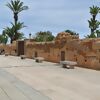
Casablanca
Casablanca is a city in western Morocco, located on the Atlantic Ocean. It is the capital of the Grand Casablanca region. With a population of 3,299,428, Casablanca is Morocco's largest city as well as its chief port. It's also the biggest city in the Maghreb. Casablanca is considered the economic and business center of Morocco, while the political capital city of Morocco is Rabat.
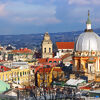
Naples
Naples is a city in Italy; it is the capital of the region of Campania and of the province of Naples. Known for its rich history, art, culture, architecture, music, and gastronomy, Naples has played an important role in the Italian peninsula and beyond for much of its existence, which began more than 2,800 years ago. Situated on the west coast of Italy by the Gulf of Naples, the city is located halfway between two volcanic areas, Mount Vesuvius and the Phlegraean Fields. Naples has the fourth-largest urban economy in Italy, after Milan, Rome and Turin. It is the world's 103rd-richest city by purchasing power, with an estimated 2011 GDP of US$83.6 billion. The port of Naples is one of the most important in Europe, and has the world's second-highest level of passenger flow, after the port of Hong Kong. The city has long been a major cultural centre with a global sphere of influence, particularly during the Renaissance and Enlightenment eras. In the immediate vicinity of Naples are numerous culturally and historically significant sites, including the Palace of Caserta and the Roman ruins ofPompeii and Herculaneum. Culinarily, it is synonymous with pizza, which originated in the city.
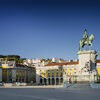
Lisbon
The capital of Portugal, Lisbon (Portuguese: Lisboa) has experienced a renaissance in recent years, with a contemporary culture that is alive and thriving and making its mark in today's Europe. Perched on the edge of the Atlantic Ocean, Lisbon is one of the rare Western European cities that faces the ocean and uses water as an element that defines the city. Lisbon enchants travellers with its white-bleached limestone buildings, intimate alleyways, and an easy-going charm that makes it a popular year-round destination.
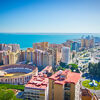
Málaga
Málaga is a large city in the southern Spanish region of Andalucia and capital of the Malaga Province. The largest city on the Costa del Sol, Malaga has a typical Mediterranean climate and is also known as the birthplace of famous Spanish artist Pablo Picasso. The city offers beaches, hiking, architectural sites, art museums, excellent shopping and cuisine. While more laid back than Madrid or Barcelona, Malaga is still the center and transport hub for the hugely popular Costa del Sol region, which is flooded with tourists in the summer, and the city has certainly cashed in on the sun and sand, with lots of new construction as well as hotels and facilities geared to tourists. However, Malaga also offers some genuinely interesting historical and cultural attractions in its old city and its setting on the coast is still beautiful.

Funchal
Funchal is the largest city, the municipal seat and the capital of Portugal's Autonomous Region of Madeira. The city has a population of 111,892, making it the 6th largest city in Portugal, and has been the capital of Madeira for more than five centuries. Because of its high cultural and historical value, Funchal is one of Portugal's main tourist attractions. It is also popular as a destination for New Year's Eve, and it is the leading Portuguese port on cruise liner dockings.

Palermo
Palermo is a city of Southern Italy, the capital of both the autonomous region of Sicily and the Metropolitan City of Palermo. The city is noted for its history, culture, architecture and gastronomy, playing an important role throughout much of its existence; it is over 2,700 years old. Founded in 734 BC by the Phoenicians as Ziz ('flower'), Palermo is Sicily's cultural, economic and touristic capital. It is a city rich in history, culture, art, music and food. Numerous tourists are attracted to the city for its good Mediterranean weather, its renowned gastronomy and restaurants, its Romanesque, Gothic and Baroque churches, palaces and buildings, and its nightlife and music. The city is also was one of the largest cities in the Mediterranean and is now among the top tourist destinations in both Italy and Europe. It is the main seat of the UNESCO World Heritage Site of Arab-Norman Palermo and the Cathedral Churches of Cefalù and Monreale. The city is also going through careful redevelopment, preparing to become one of the major cities of the Euro-Mediterranean area. Roman Catholicism is highly important in Palermitano culture. The Patron Saint of Palermo is Santa Rosalia whose Feast Day is celebrated on 15 July. The area attracts significant numbers of tourists each year and is widely known for its colourful fruit, vegetable and fish markets at the heart of Palermo, known as Vucciria, Ballarò and Capo.

Barcelona
Barcelona – Spain's enchanting capital, second largest and most populous city. It is a huge city that vibrates with life, and there’s certainly not another city in the country to touch it for its sheer style, looks or energy. It is one of the world's leading tourist, economic, trade fair and cultural centers, and its influence in commerce, education, entertainment, media, fashion, science, and the arts all contribute to its status as one of the world's major global cities. Barcelona is home to masterpieces of many great architects – the most famous of which is Antoni Gaudí.

Livorno
Livorno is an Italian port city on the Ligurian Sea, on the western coast of Tuscany, Italy. Traditionally been known in English as Leghorn, it's known for its seafood, Renaissance-era fortifications and modern harbor with a cruise ship port.

Cagliari
Cagliari is an Italian municipality and the capital of the island of Sardinia, an autonomous region of Italy. Cagliari's Sardinian name ''Casteddu'' literally means castle. An ancient city with a long history, Cagliari has seen the rule of several civilisations. Under the buildings of the modern city there is a continuous stratification attesting to human settlement over the course of some five thousand years, from the Neolithic to today. Historical sites include the prehistoric domus de janas, very damaged by cave activity, a large Carthaginian era necropolis, a Roman era amphitheatre, a Byzantine basilica, three Pisan-era towers and a strong system of fortification that made the town the core of Spanish Habsburg imperial power in the western Mediterranean Sea. Its natural resources have always been its sheltered harbour, the often powerfully fortified hill of Monti Castru, the modern Casteddu, the salt from its lagoons, and, from the hinterland, wheat from the Campidano plain and silver and other ores from the Iglesiente mines. Today the city is a regional cultural, educational, political and artistic centre, known for its diverse Art Nouveau architecture and several monuments. It is also Sardinia's economic and industrial hub, having one of the biggest ports in the Mediterranean Sea, an international airport, and the 106th highest income level in Italy (among 8,092 comuni), comparable to that of several northern Italian cities. It is also the seat of the University of Cagliari, founded in 1607, and of the Primate Roman Catholic archdiocese of Sardinia, since the 5th century AD.
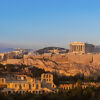
Athens
Athens is the capital and largest city of Greece. Athens dominates the Attica periphery and it is one of the world's oldest cities, as its recorded history spans around 3,400 years. The city is widely referred to as the cradle of Western civilization and the birthplace of democracy, largely because of its cultural and political impact on the European continent and in particular the Romans. In modern times, Athens is a large cosmopolitan metropolis and central to economic, financial, industrial, maritime, political and cultural life in Greece. Its compact downtown, north of campus, is alive with clubs, bars, restaurants, galleries and – of course – record stores; Broad Street in particular is lined with arty shops.
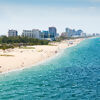
Fort Lauderdale
Fort Lauderdale is a city in the U.S. state of Florida, 28 miles (45 km) north of Miami. The city is a popular tourist destination, with an average year-round temperature of 75.5 °F (24.2 °C), and 3,000 hours of sunshine per year. Greater Fort Lauderdale which takes in all of Broward County hosted 12 million visitors in 2012, including 2.8 million international visitors. The district has 561 hotels and motels comprising nearly 35,000 rooms. Greater Fort Lauderdale has over 4,000 restaurants, 63 golf courses, 12 shopping malls, 16 museums, 132 nightclubs, 278 parkland campsites, and 100 marinas housing 45,000 resident yachts. Fort Lauderdale is named after a series of forts built by the United States during the Second Seminole War. The forts took their name from Major William Lauderdale (1782–1838), younger brother of Lieutenant Colonel James Lauderdale. William Lauderdale was the commander of the detachment of soldiers who built the first fort.
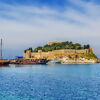
Kusadasi
Kuşadası is a coastal resort town in the Aydin Province of Aegean Turkey. It has become a popular holiday resort, especially for visitors from Northern and Western Europe. It has about 50,000 residents, although that grows significantly during the high season from May to October. The lovely city caters to tourists, growing to over half a million during the high season, when the large resort fills with tourists (from Turkey itself, northern Europe and the Balkans) plus the hotel staff, bar staff, construction workers, and drivers who are needed to work in the restaurants servicing all these visitors. The hills behind Kuşadasi are built up with big hotels and blocks of holiday flats.
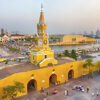
Cartagena
Cartagena is Colombia's most famous tourist destination on the Caribbean coast. The city is renowned for its colonial and colourful architecture. With a tropical climate, the city is also a popular beach destination. The city was founded on June 1, 1533, and named after Cartagena, Spain, itself after the original Carthage in Tunisia. However, settlement in this region around Cartagena Bay by various indigenous people dates back to 4000 BC. During the colonial period Cartagena served a key role in administration and expansion of the Spanish empire. It was a center of political and economic activity due to the presence of royalty and wealthy viceroys. In 1984 Cartagena's colonial walled city and fortress were designated a UNESCO World Heritage Site.

Ponta Delgada
Ponta Delgada is the largest municipality and administrative capital of the Autonomous Region of the Azores in Portugal. It is located on São Miguel Island, the largest and most populous in the archipelago. Cruise ships on repositioning voyages between North America and Europe often call there. Cruise-ship visitors to Ponta Delgada will often drive out into the countryside for visits to small villages and natural volcanic wonders. There's usually time afterward for a relaxed amble through the lovely port city, noted for its squares paved with black and white tiles, fabulous churches, and public buildings with their white-painted facades and brown-black volcanic stone trim. Given its dimension and the diversity of facilities and services it offers, Ponta Delgada is also the place for experiencing, a true gateway to the active discovery of the Azores Archipelago, with many things to do.

Cadiz

Little San Salvador
Little San Salvador Island, also known as Half Moon Cay, is one of about 700 islands that make up the archipelago of The Bahamas. It is a private island, owned by Holland America Line, which uses it as a port of call for the cruise ships it operates in the region. Prior to being owned by HAL, Little San Salvador was the private island of Norwegian Cruise Line. The island is also a significant nesting area for waterfowl. Activities offered on the island include swimming, sunbathing, scuba diving, jet-skiing, cycling, and snorkeling. Deep-sea fishing, parasailing, glass-bottom boat rides, and nature walks also are available. A variety of water toys are available for rent, including Hobie catamarans, Sunfish sailboats, windsurfing sailboards, and kayaks.

Civitavecchia
Civitavecchia is a town and comune of the Metropolitan City of Rome in the central Italian region of Lazio. A sea port on the Tyrrhenian Sea, the name ''Civitavecchia'' means "ancient town". The modern city was built over a pre-existing Etruscan settlement. The massive Forte Michelangelo was first commissioned from Donato Bramante by Pope Julius II, to defend the port of Rome. The upper part of the "maschio" tower, however, was designed by Michelangelo, whose name is generally applied to the fortress. North of the city at Ficoncella are the Terme Taurine baths frequented by Romans and still popular with the Civitavecchiesi. The modern name stems from the common fig plants among the various pools. And also next to the town is the location of the cruise ship docks. All major cruise lines start and end their cruises at this location, and others stop for shore excursion days that allow guests to see Rome and Vatican sights, which are ninety minutes away.

Samos
Samos, a Greek island in the eastern Aegean Sea, lies very close to the Turkish mainland and is a popular stopping off point for travellers between the two countries as it lies on the route between Athens and Izmir. In ancient times Samos was a particularly rich and powerful city-state, particularly known for its vineyards and wine production. It is home to Pythagoreion and the Heraion of Samos, a UNESCO World Heritage Site that includes the Eupalinian aqueduct, a marvel of ancient engineering. Samos is the birthplace of the Greek philosopher and mathematician Pythagoras, after whom the Pythagorean theorem is named, the philosopher Epicurus, and the astronomer Aristarchus of Samos, the first known individual to propose that the Earth revolves around the sun. Samian wine was well known in antiquity, and is still produced on the island.











